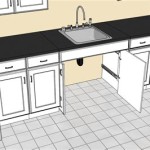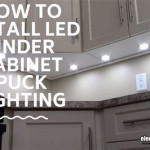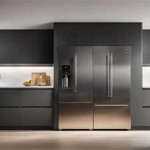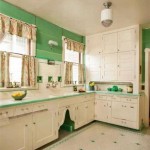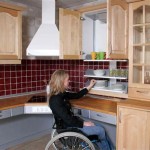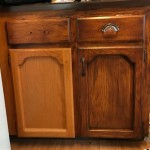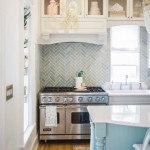Kitchen Cupboard Hinges Types: A Comprehensive Guide
Kitchen cupboard hinges are essential components that facilitate the opening and closing of cabinet doors. They come in a variety of types, each designed to cater to specific cabinet designs, functionality requirements, and aesthetic preferences. Understanding the different types of hinges is paramount for ensuring the smooth operation, durability, and overall appearance of kitchen cabinetry.
The selection of appropriate hinges should be based on a careful consideration of factors such as the door overlay style, the desired opening angle, the weight of the door, and the desired level of adjustability. This article provides a comprehensive overview of the prominent types of kitchen cupboard hinges, outlining their features, applications, and relative advantages and disadvantages.
Overlay Hinges: Framing the Cabinet Face
Overlay hinges are categorized based on how much the cabinet door overlaps the cabinet frame. This overlap is crucial for defining the aesthetic of the cabinetry and concealing the cabinet frame edges. Overlay hinges are available in full overlay, half overlay, and inset configurations. The choice depends on the overall design objectives and the desired exposure of the cabinet frame.
Full Overlay Hinges: These hinges are designed so the cabinet door completely covers the cabinet frame. This creates a seamless, streamlined appearance, minimizing the visibility of the cabinet frame. Full overlay hinges are a popular choice for modern and contemporary kitchen designs, where a clean, uninterrupted aesthetic is desired. They require precise measurements and installation to ensure proper alignment and prevent rubbing or binding.
Half Overlay Hinges: Half overlay hinges are used when two cabinet doors share a center stile or partition. In this configuration, each door only partially overlays the frame, allowing for a small gap in the middle. These hinges are commonly utilized in face-frame cabinets where a less concealed frame is acceptable. Half overlay hinges often require a specific mounting plate to create the correct spacing for the doors to operate properly.
Inset Hinges: Inset hinges are designed for doors that sit flush with the cabinet frame when closed. The door is recessed into the frame, creating a sleek, integrated look. Inset hinges are often found in traditional and high-end kitchen designs. They often require more precise installation and potentially more complex hinge mechanisms than overlay hinges. Careful attention must be given to the door's thickness and the frame's recess to ensure proper fit and operation.
Concealed Hinges: Hidden Mechanics
Concealed hinges, also known as European hinges, are designed to be largely hidden when the cabinet door is closed, providing a clean and sophisticated appearance. These hinges are typically mortised into both the cabinet door and the cabinet frame, resulting in a near-invisible installation. They offer a high degree of adjustability, allowing for precise alignment and smooth operation.
Standard Concealed Hinges: These are the most common type of concealed hinge and are available in various overlay configurations (full, half, and inset). They typically offer three-way adjustability, enabling adjustments in height, depth, and side-to-side positioning. The adjustability is crucial for aligning the doors perfectly during installation and allowing for minor adjustments over time as the cabinet settles.
Soft-Close Concealed Hinges: These hinges incorporate a dampening mechanism that prevents the cabinet door from slamming shut. This feature reduces noise and wear and tear on the cabinet. Soft-close hinges are a popular upgrade, providing a more luxurious feel and extending the lifespan of the cabinetry. The soft-close function relies on hydraulic or pneumatic dampeners integrated into the hinge mechanism.
Self-Closing Concealed Hinges Self-closing hinges have a spring mechanism that automatically closes the door when it is within a few inches of the cabinet frame. This helps to ensure that doors are always fully closed, especially in busy kitchens where doors may be frequently left ajar. Some self-closing hinges may also incorporate soft-close technology.
Clip-On Concealed Hinges: These hinges feature a clip-on mechanism that allows the door to be easily detached and reattached to the cabinet frame without tools. This is particularly useful for cleaning and maintenance purposes. The clip-on design simplifies door removal and reinstallation, saving time and effort during routine tasks.
Exposed Hinges: Decorative and Functional
Exposed hinges are mounted on the surface of the cabinet door and frame, making them visible when the door is closed. While they offer a more traditional aesthetic, they can also be incorporated into contemporary designs as a decorative element. Exposed hinges are available in a wide range of styles, finishes, and materials, allowing for customization and personalization.
Butt Hinges: Butt hinges are a classic type of exposed hinge consisting of two rectangular leaves that are joined by a pin. They are typically mortised into both the cabinet door and the frame, providing a flush fit. Butt hinges are available in various sizes and thicknesses to accommodate different door weights and thicknesses. Different finishes are available, from polished brass to antique bronze, allowing integration with nearly any design aesthetic.
Strap Hinges: Strap hinges are characterized by their long, decorative straps that extend across the cabinet door and frame. They are often used on larger or heavier doors and can add a rustic or traditional touch. Strap hinges are available in various lengths and styles, ranging from simple, straight designs to ornate, curved designs. The long straps provide added support and stability for heavier doors.
Butterfly Hinges: Butterfly hinges, also known as decorative hinges, are shaped like butterfly wings and feature intricate designs. They are often used to enhance the aesthetic appeal of cabinetry. Butterfly hinges typically are smaller than strap hinges and offer less load-bearing capacity. They are well-suited to decorative applications on smaller cabinets.
H-Hinges and HL-Hinges: These hinges are shaped like the letters "H" and "HL", respectively, and provide a distinctive look. They are often used in period-style kitchens or to create a vintage aesthetic. These hinges are surface-mounted, making them relatively easy to install. The HL hinge differs from the H-hinge in that one leaf is longer than the other.
Specialty Hinges: Addressing Unique Requirements
In addition to the standard types of hinges, there are also specialty hinges designed to address specific functional requirements or design challenges. These hinges include pivot hinges, bi-fold hinges, and pivot hinges, among others.
Pivot Hinges: Pivot hinges allow the cabinet door to swing open from a pivot point at the top and bottom of the door, rather than from the side. They are often used on tall or narrow cabinets and allow the door to swing a full 180 degrees. Pivot hinges are not traditional hinges because they do not have leaves connected by a knuckle and pin. Their pivoting action offers a unique style and function.
Bi-Fold Hinges: Bi-fold hinges are used on doors that fold in half, allowing them to open wider and take up less space. These hinges are commonly used on pantry doors or cabinets in tight spaces. Bi-fold systems typically use multiple hinges per door to provide stability and support. The hinges are typically mounted on the edge of the door panels and the cabinet frame.
Self-Closing Lid Support Hinges: These hinges offer both support and a self-closing function for upward swinging doors, such as those found on toy chests or certain types of kitchen cabinetry. They prevent the lids from slamming shut reducing the risk of injury or damage. They are often adjustable so that the closing rate can be controlled.
90-Degree Corner Hinges: These are specialized hinges designed for corner cabinets where the door wraps around the corner, providing full access to the cabinet’s interior. They require precise alignment and robust construction to support the weight of the door. They allow for unobstructed access into corner cabinets, maximizing storage space.
Careful consideration of the door overlay style, cabinet construction, desired functionality, and aesthetic preferences is critical when selecting kitchen cupboard hinges. By understanding the characteristics and applications of each hinge type, homeowners and kitchen designers can ensure the smooth operation, durability, and overall appearance of their cabinetry. Different hinge types may require different installation tools and techniques. The weight of the cabinet doors should be considered when selecting hinges to ensure stability and longevity. Professional installation is recommended to ensure proper alignment and functionality, especially for concealed and specialty hinges. Regular maintenance, such as lubricating the hinges, can help to extend their lifespan and prevent squeaking.

21 Types Of Cabinet Hinges Explained

Glimpse Through The Various Types Of Hinges For Cabinets Mccoy Mart

5 Common Types Of Cabinet Hinges For Purchasing

5 Common Types Of Cabinet Hinges For Purchasing

Concealed Cabinet Hinges Types Features And Furnica
21 Types Of Cabinet Hinges Explained

Learn Woodworking Tips With Rockler

Cabinet Hinges Door Häfele

Types Of Cabinet Hinges The Home Depot

Cabinet Hinges Made Easy Cabinetmaker S Choice
Related Posts

